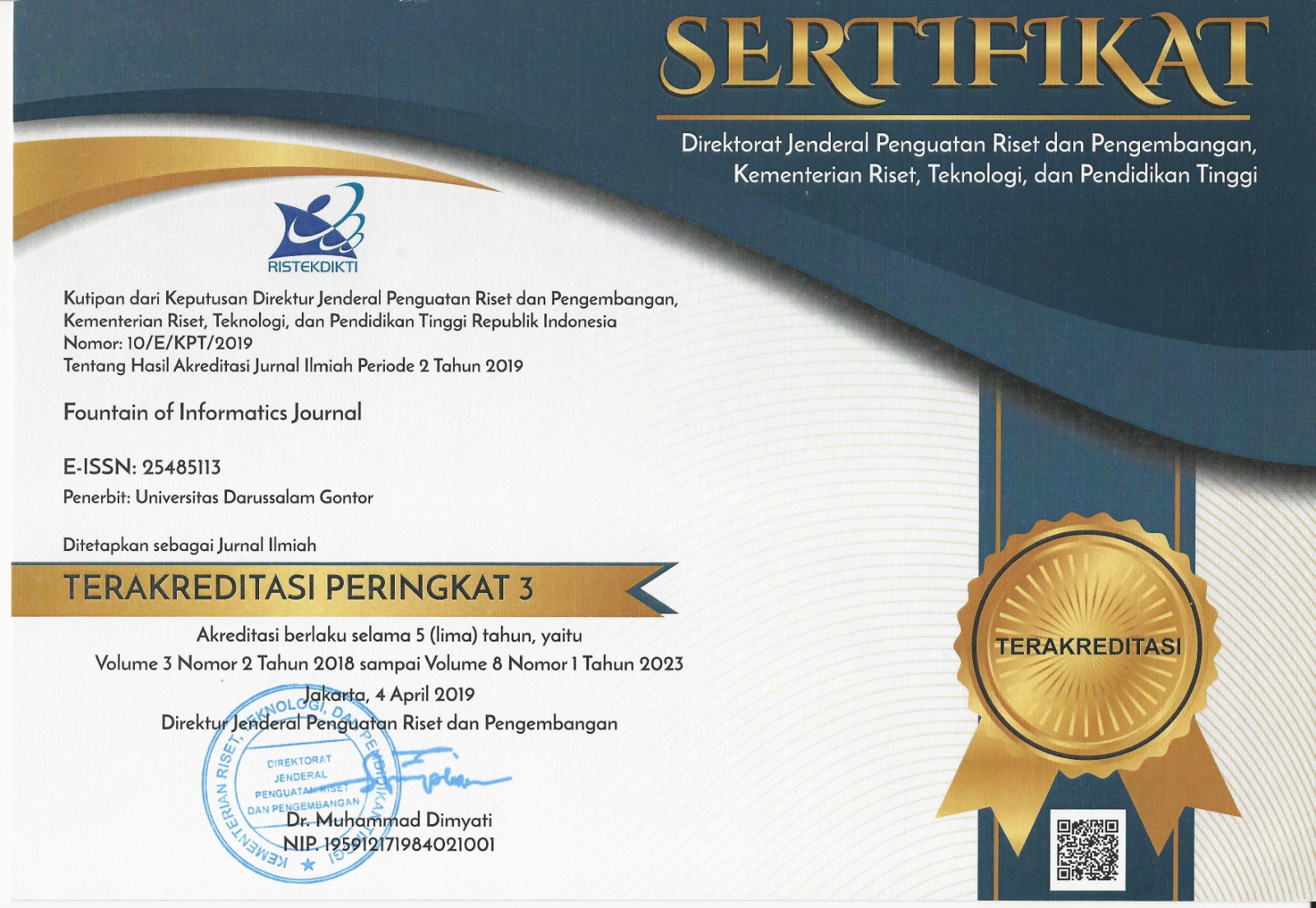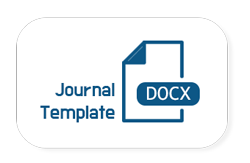Pengenalan Bahasa Isyarat Indonesia (BISINDO) Untuk Karakter Huruf Dengan Menggunakan Microsoft Kinect
DOI:
https://doi.org/10.21111/fij.v3i2.2469Keywords:
Bahasa Isyarat Indonesia (BISINDO), Hidden Markov Model, Microsoft KinectAbstract
Language is a tool used by humans to communicate between each others. Every human being was born in the world has the ability to communicate in accordance with his mother's language but not all humans are born with good communication skills, one of them is a person with special needs. Sign language is a communication device used by people in need a in communicating with other people. This language uses the body's members to communicate, one way to communicate is to use members of the body that is the hand. Every movement that is done will have a different meaning. In decades, the research in sign language is experiencing a very rapid development. In this study shows the introduction of sign language for character characters using Microsoft Kinect and the Hidden Markov Model (HMM) method. For data are taken from the (Bahasa Isyarat Indonesia) BISINDO dictionary. The results of this research is the level of accuracy of the introduction of letters.ÂReferences
K.S. Savita and A.P. Nur Athirah, “Sign language courseware for hearing impaired children in Malaysiaâ€, World Applied Sciences Journal 12 Special Issue on Computer Applications and Knowledge Management, pp. 59-64, 2011.
“SIGNUM Databaseâ€, Diakses Terakhir Pada 11 September, 2018, http://www.phonetik. unimuenchen.de/forschung/Bas/SIGNUM/
Z. Zafrulla, H. Brashear, T. Starner, H. Hamilton, and P. Presti, “American sign language recognition with the kinectâ€, Proc. 13th Int. Conf. multimodal interfaces, pp. 279–286, 2011.
W. Gao, G. Fang, D. Zhao, and Y. Chen, “A Chinese sign language recognition system based on SOFM/SRN/HMMâ€, Pattern Recognition., vol. 37, no. 12, pp. 2389–2402, 2004.
M. A. Abdel-Fattah, “Arabic sign language: A perspectiveâ€, J. Deaf Stud. Deaf Educ., vol. 10, no. 2, pp. 212–221, 2005.
U. von Agris, D. Schneider, J. Zieren, and K.- F. Kraiss, “Rapid signer adaptation for isolated sign language recognitionâ€, 24th IEEE International Conference on Computer Vision and Pattern Recognition, June 2006.
K. Khoshelham and S. O. Elberink, “Accuracy and resolution of kinect depth data for indoor mapping applicationsâ€, Sensors, vol. 12, no. 2, pp. 1437–1454, 2012.
R. Min, N. Kose, and J. L. Dugelay, “KinectfaceDB: A kinect database for face recognitionâ€, IEEE Trans. Syst. Man, Cybern. Syst., vol. 44, no. 11, pp. 1534–1548, 2014.
J. Kyle and B. Woll, “British sign languageâ€, Spec. Educ. Forward Trends, vol. 8, no. 1, pp. 19–23, 1981.
GERKATIN, Diakses Terakhir Pada 11 September, 2018, Lebih Lanjut Tentang BISINDO. http://gerkatin.com/detailberita-140-lebih-lanjut-tentangbisindo.html.
Z. Zhang, “Microsoft kinect sensor and its effectâ€, IEEE Multimedia, vol. 19, no. 2. pp. 4–10, 2012.
A. Meng, “An introduction to markov and hidden markov modelsâ€, Month, pp. 1–20, 2003.
“HMMâ€, Diakses Terakhir Pada 11 September, 2018, http://www.ibi.vu.nl/teaching/a4g/ materials/lect11-handout.pdf
Downloads
Submitted
Accepted
Published
Issue
Section
License
Please find the rights and licenses in the Fountain of Informatics Journal (FIJ). By submitting the article/manuscript of the article, the author(s) agree with this policy. No specific document sign-off is required.
1. License
The non-commercial use of the article will be governed by the Creative Commons Attribution license as currently displayed on Creative Commons Attribution-NonCommercial-ShareAlike 4.0 International License.Â
2. Author(s)' Warranties
The author warrants that the article is original, written by the stated author(s), has not been published before, contains no unlawful statements, does not infringe the rights of others, is subject to copyright that is vested exclusively in the author, and free of any third party rights, and that any necessary written permissions to quote from other sources have been obtained by the author(s).
3. User/Public Rights
FIJ's spirit is to disseminate articles published are as free as possible. Under the Creative Commons license, FIJ permits users to copy, distribute, display, and perform the work for non-commercial purposes only. Users will also need to attribute authors and FIJ on distributing works in the journal and other media of publications. Unless otherwise stated, the authors are public entities as soon as their articles got published.Â
4. Rights of Authors
Authors retain all their rights to the published works, such as (but not limited to) the following rights;
- Copyright and other proprietary rights relating to the article, such as patent rights,
- The right to use the substance of the article in own future works, including lectures and books,
- The right to reproduce the article for own purposes,
- The right to self-archive the article (please read out deposit policy),
- The right to enter into separate, additional contractual arrangements for the non-exclusive distribution of the article's published version (e.g., post it to an institutional repository or publish it in a book), with an acknowledgment of its initial publication in this journal (Jurnal Optimasi Sistem Industri).
5. Co-Authorship
If the article was jointly prepared by more than one author, any authors submitting the manuscript warrants that he/she has been authorized by all co-authors to be agreed on this copyright and license notice (agreement) on their behalf, and agrees to inform his/her co-authors of the terms of this policy. FIJ will not be held liable for anything that may arise due to the author(s) internal dispute. FIJ will only communicate with the corresponding author.
6. Royalties
Being an open accessed journal and disseminating articles for free under the Creative Commons license term mentioned, author(s) aware that FIJ entitles the author(s) to no royalties or other fees.Â
7. Miscellaneous
FIJ will publish the article (or have it published) in the journal if the article’s editorial process is successfully completed. FIJ's editors may modify the article to a style of punctuation, spelling, capitalization, referencing, and usage that deems appropriate. The author acknowledges that the article may be published so that it will be publicly accessible and such access will be free of charge for the readers as mentioned in point 3.










